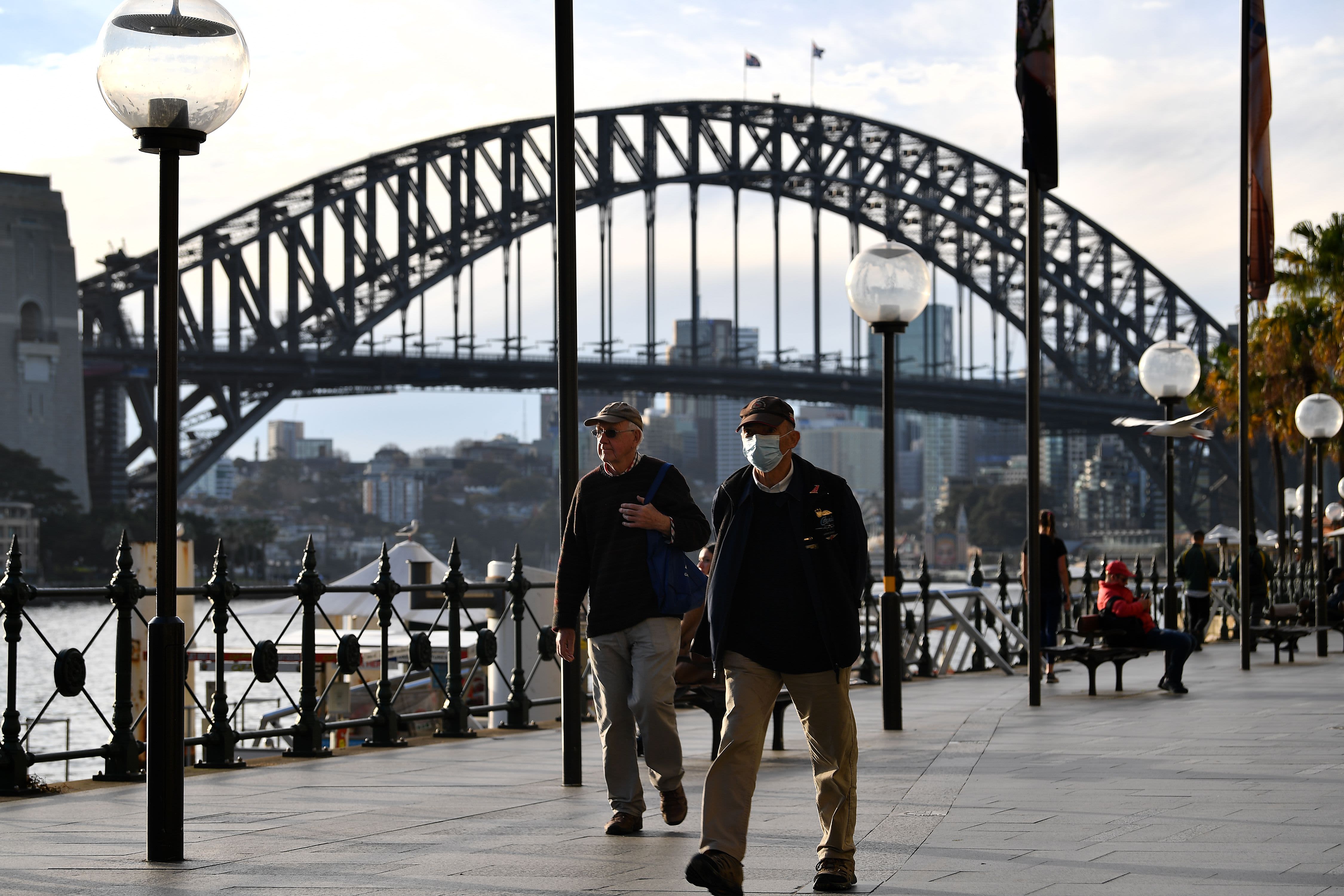
A man wearing a face mask walks before the Harbour Bridge in Sydney, Australia on July 22, 2020.
Saeed Khan | AFP | Getty Images
The Australian dollar has spiked some 28% since a year-to-date low in March. As the country fell into recession in the second quarter, however, analysts were mixed on where the currency is headed.
In March, the Aussie dollar fell to a year-to-date closing low of $0.5738 against the greenback as the coronavirus crisis intensified, and lockdown measures were triggered nationwide.
Defying the country’s weak economic outlook, the currency continued strengthening in the past few months. It briefly broke through the 0.74 mark this week, and reached a two-year peak, according to Reuters estimates. It has since fallen back to the 0.73 level.
Erik Nelson, currency strategist at Wells Fargo, is rather bullish on the Australian currency and expects it will “continue to grind higher.”
He credited the currency’s positive outlook to China’s economic recovery — as the country was the first in the world to be hit by the coronavirus, and is emerging as one of the first to recover from the doldrums.
The Australian dollar is often seen as a barometer for global risk appetite, as well as a proxy for China’s growth due to its close trading ties with the Asian giant.
“If you consider some of the fundamentals in Australia, you can justify valuation of the Australian dollar at current levels,” Nelson said. He also said the country is “very well positioned right now” as it provides much raw material for China’s industrial sector, which has bounced back and is “one of the biggest engines of the current global economic recovery.”
China’s manufacturing sector was battered when factories temporarily shut early this year due to the pandemic, but soon recovered after restrictions were lifted and the economy was reopened. A private survey on Tuesday showed factory activity expanded in August at the fastest pace in a decade.
The two countries are closely tied together: China is Australia’s biggest trade partner, and dominates the purchase of commodities such as Australian iron ore, coal and agricultural goods.
However, tensions between the two have intensified in recent months, after Canberra called for a global investigation into the origins of the coronavirus, which was first reported in the Chinese city of Wuhan.
Since then, China has taken some tough actions on imports from Australia. It has imposed tariffs on barley from the country, suspended some beef imports, and warned its students to reconsider studying in Australia.
Just last week, Beijing said it launched an anti-subsidy investigation on some wine imports from Australia. It came two weeks after China announced it had begun an anti-dumping probe on those goods.
However, not everyone is bullish on the Aussie dollar’s outlook.
Against the backdrop of Australia’s weakening economy, Mayank Mishra, global macro strategist at Standard Chartered Bank, was slightly more cautious on the Australian dollar.
“The GDP print is just highlighting the fact that the recovery is going to take a while … the (Reserve Bank of Australia) is going to maintain easy policy for the foreseeable future,” he said, adding that the central bank’s signalling of more easing may weigh on the Australian dollar.
Data on Wednesday showed that Australia officially slipped into a recession. Gross domestic product fell at a record pace in the second quarter, shrinking 7% compared to a 0.3% decline in the previous quarter.




